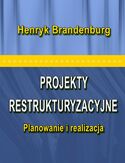Facets of prefabrication. Perspectives on modelling and detecting phraseological units - Onepress

ISBN: 978-83-8088-974-3
stron: 268, Format: ebook
Data wydania: 2018-04-21
Księgarnia: Onepress
Cena książki: 16,96 zł (poprzednio: 19,72 zł)
Oszczędzasz: 14% (-2,76 zł)
Corpus-based studies have brought fresh insights into the role of collocability and lexico-grammatical patterning as core aspects of language permeating its structure and use. Facets of Prefabrication builds upon these findings and provides further impetus in the direction of large-scale explorations of phraseology. lt introduces a dependency- based method of detecting potential phraseological units to increase the coverage of prefabricated structures in automatic combinatorial dictionaries which have so far been mainly restricted to binary collocations. Various sources of evidence are used to evaluate this approach and assess its relevance to phraseological theories, including word recall experiments and phraseological markers analyses. These investigations open new perspectives on the interplay of novelty vs. formulaicity in naturally-occurring language and increase our recognition of seemingly subtle, but nevertheless ubiquitous aspects of phraseological prefabrication.
Osoby które kupowały "Facets of prefabrication. Perspectives on modelling and detecting phraseological units", wybierały także:
- English 4 IT. Praktyczny kurs j 49,67 zł, (14,90 zł -70%)
- Ucz si 9,67 zł, (2,90 zł -70%)
- Zyskaj angielski akcent. Kurs video. Trening wymowy 99,00 zł, (39,60 zł -60%)
- English 4 IT. Praktyczny kurs j 59,00 zł, (26,55 zł -55%)
- ASAP. Jak nauczyć się języka obcego tak szybko, jak to możliwe 34,15 zł, (15,71 zł -54%)
Spis treści
Facets of prefabrication. Perspectives on modelling and detecting phraseological units eBook -- spis treści
- From novelty to prefabrication 9
Compositionality and novelty in language 9
Memory and prefabrication 14
Recognition of prefabrication 16
Facets of prefabrication 19
- Defining collocability 23
Incidence of prefabricated language 24
What are collocations? 28
Collocations as phraseological units 29
Identifying phraseological units 31
Properties of collocations 35
A review of definitions 38
Recurrence, recall and recomposition 47
Stereotyped recurrence 51
Summary 59
- Insights from phraseology extraction 61
Phraseology extraction 62
Positional models 62
Relational models 66
Automatic Combinatorial Dictionaries 67
The structure and functions of ACDs 72
Which reference corpora? 74
Phraseological units as dependency trees 76
Idioms as catenae 77
Dependency and collocability 90
Collocational catenae 94
Incidence of first-order collocational catenae in the BNC 104
Recurrence of binary collocational chains 107
Evaluation of binary ACDs 111
Extracting higher-order catenae 117
Subsumption 120
Catena-based ACD structure 123
Data-driven extraction 132
The effect of corpus composition 134
Grouping variants 136
Example application of phraseology detection 137
Conclusions 141
- Recall of collocational chains 143
Validation of automatic combinatorial dictionaries 143
Combining ‘in vivo’ and ‘in vitro’ data 148
The rigidity of collocational catenae 151
Recall in open-ended contexts 157
Draw vs. take a deep breath 158
Receive vs. get federal funds 163
Gain vs. win international fame 166
Cause significant vs. severe damage 169
Read the small vs. fine print 172
Walk a thin vs. fine line 175
Tell a white vs. little lie 177
Solve a difficult vs. complex problem 179
Play a key vs. important role 181
Get vs. gain a better understanding 184
Conduct comprehensive vs. do a quick survey 186
Do much vs. file necessary paperwork 189
Binary choice questions 191
Win a decisive vs. overwhelming victory 192
Sway vs. shape public opinion 195
Make a convincing vs. compelling argument 199
Draw vs. reach the same conclusion 202
Give the same vs. equal opportunity 204
A model 206
Conclusions 209
- Phraseology markers 213
The proverbial N 214
Syntactic patterns 219
Examples of other markers 224
Non-figurative phraseology 227
Proverbial as iconic 229
Derivations 235
Conclusions 237
- Conclusions 241
Bibliography 247
Index 261
Tables and Figures 263





